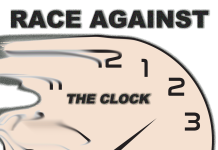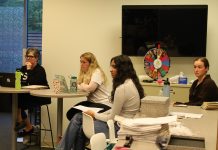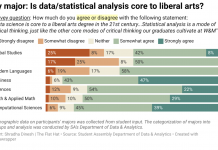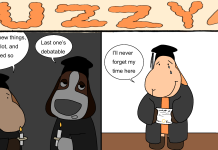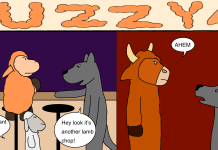__College is fifth-worst for percentage getting Pell grants__
p. Rankings released by Washington Monthly reveal that the College ranks fifth among national universities for lowest percentage of students receiving Pell grants — only 9 percent — and second among public universities scored. Pell grants are educational federal grants that provide up to $4,310 per year for educational expenses. Washington University in St. Louis topped the list at 7 percent; Princeton University, the University of Virginia and Wake Forest University each scored 8 percent. The College tied for fifth with Harvard University.
p. “The lower your family’s expected contribution, the greater the amount you’ll be able to get as a Pell grant,” economics Professor David Feldman said.
p. Because the grant is based on financial need, some researchers use the percentage of students who receive grants to measure economic diversity in a student body.
p. “The question about whether or not a family is poor depends upon how the federal government calculates the expected family contribution,” Robert Archibald, an economics professor and expert in higher education economics, said. “Most students from families in the bottom half of the income distribution are probably Pell-eligible. This means that both the really poor and the moderately poor are Pell-eligible.”
p. However, the statistic does not mean that the College’s student body is necessarily wealthy.
p. “The 9 percent Pell-eligible statistic tells us that 91 percent of the [College] student body comes from the upper half of the income distribution,” Archibald said. “There could be a large number of people whose incomes are just a bit too high to make them Pell-eligible … If this were true, our student body would be solidly middle class, not rich.”
p. According to Feldman, the College is not currently providing enough financial aid to students; he cited the state budget crunch as a major factor.
p. “At present [the College] does not meet every dollar of demonstrated financial need for its incoming students,” he said.
p. “The state’s money allocated to financial aid is not sufficient for the College to do it, and the College itself hasn’t allocated enough money of its own toward aid, and away from other things, to do it.”
Archibald said that the statistic reveals more about the College’s recruiting situation and public image than the financial circumstances of the student body.
p. “What [the statistic] tells you is that the Ivies have done a better job of publicizing the financial aid they have to offer, and perhaps their financial aid is more generous, and perhaps they do more targeting recruiting,” Archibald said.
p. Both Archibald and Feldman agreed that in order to create a more diverse student body — a major goal of College President Gene Nichol — the College has to create a better public image for itself by properly advertising the available financial aid.
p. “I think that the College is, for whatever reason, not seen as welcoming to students from the bottom half of the income distribution,” Archibald said. “We have a good financial aid program for Pell-eligible students, but we have to do a better job of getting the word out.”









